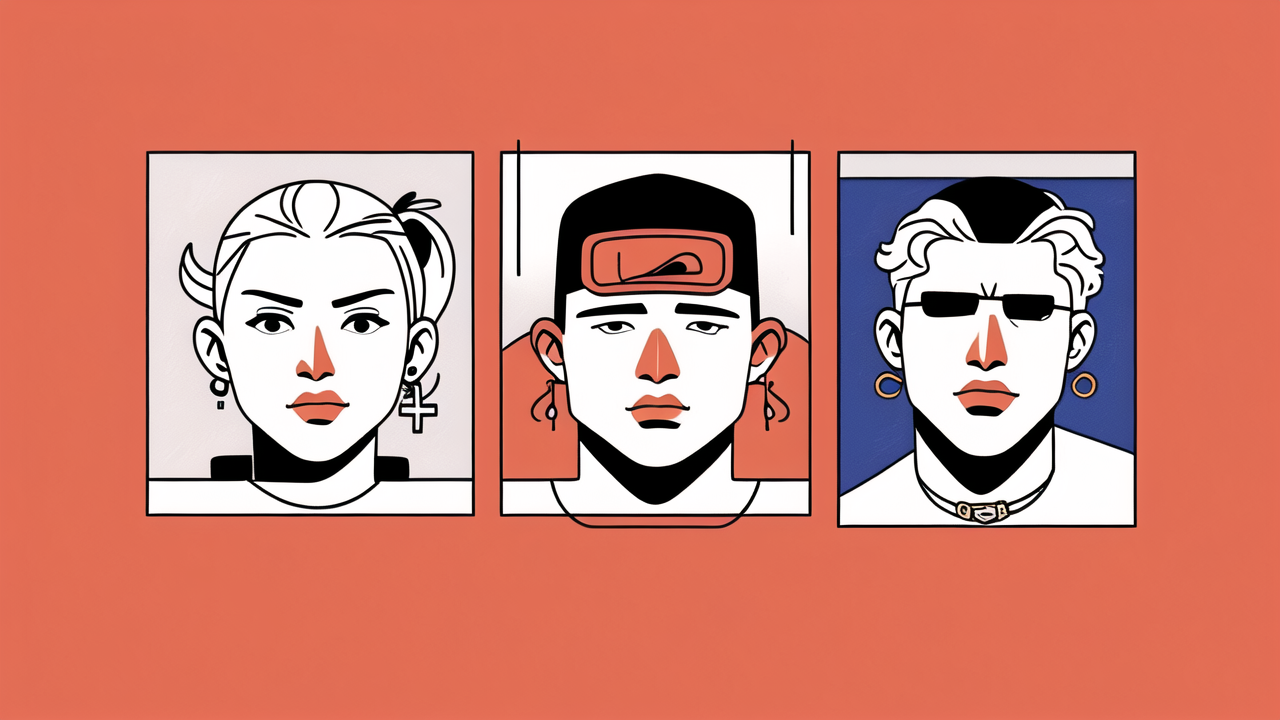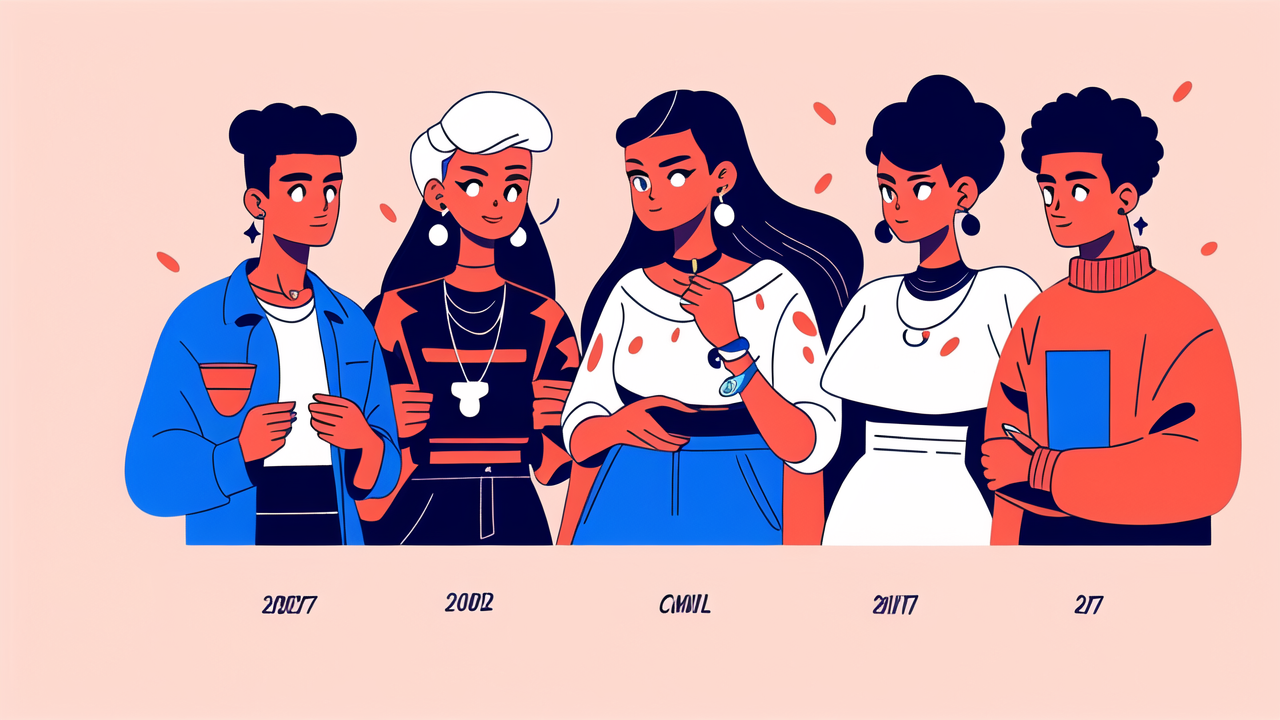The Rise of Hip Hop Jewelry in the United States
The origins of hip hop jewelry
Hip hop jewelry has deep roots in American culture. It began in the 1970s in New York City. Early hip hop artists wore bold chains and rings. These pieces were a way to show success. They were also a form of self-expression.

At first, the jewelry was simple. It often included gold chains and chunky rings. As hip hop grew, so did the style of jewelry. Artists began to wear more complex pieces. These included large pendants and diamond-encrusted items.
The rise of hip hop jewelry mirrored the rise of hip hop itself. As the music gained popularity, so did the fashion. Jewelry became a key part of hip hop culture. It was a way to stand out and make a statement.
Key factors driving its popularity
Several factors fueled the popularity of hip hop jewelry. First, it was a symbol of success. In many urban areas, wearing expensive jewelry showed you had 'made it'. It was a visible sign of wealth and status.
Music videos played a big role too. They showcased artists wearing flashy jewelry. Fans wanted to copy this look. This created a huge demand for hip hop style jewelry.
The 'bling' culture also drove popularity. 'Bling' refers to flashy, ostentatious jewelry. It became a key part of hip hop style in the 1990s. Artists competed to have the biggest and brightest pieces.
Lastly, hip hop jewelry became a form of art. Jewelers created unique, custom pieces. These often told stories or had personal meaning. This made the jewelry more than just accessories. They became cherished possessions.
Significant Symbols in Hip Hop Jewelry
The importance of emblems and icons
Emblems and icons play a crucial role in hip hop jewelry. They often carry deep meaning. Many represent the artist's background, beliefs, or achievements.

The dollar sign is a common symbol. It represents success and wealth. Many artists wear it to show they've overcome financial struggles.
Religious symbols are also popular. Crosses and angel wings are common. They can represent faith or a connection to spirituality.
Animal motifs are frequently used too. Lions symbolize strength and leadership. Eagles represent freedom and vision. These symbols help artists express their personalities.
Some artists create their own emblems. These become part of their brand. For example, Jay-Z's Roc-A-Fella chain became iconic. It represented his record label and his success in the industry.
Personal stories behind the jewelry
Many hip hop jewelry pieces tell personal stories. They're not just for show. They often have deep meaning for the wearer.
Tupac Shakur's bullet pendant is a famous example. He wore it after surviving a shooting. It symbolized his brush with death and his resilience.
Slick Rick's eye patch pendant is another iconic piece. It represents his trademark eye patch. The pendant tells his story and has become part of his image.
Some artists wear jewelry to honor lost loved ones. Kanye West wore a necklace with a picture of his late mother. It was a way to keep her memory close.
Others use jewelry to represent their hometowns. New York artists often wear pieces shaped like the city skyline. It's a way to show pride in their roots.
Custom pieces often celebrate career milestones. An artist might commission a piece after a hit album. These become treasured reminders of their success.
Celebrity Influence and Market Trends
How celebrity endorsements shape the market
Celebrity endorsements have a huge impact on hip hop jewelry trends. When a famous artist wears a piece, fans take notice. This can lead to a surge in demand for similar items.

Social media plays a big role in this. Artists share photos of their jewelry online. Fans can instantly see and admire these pieces. This creates buzz and drives sales.
Some celebrities collaborate with jewelry brands. They help design collections. This gives fans a chance to own jewelry created by their favorite artists.
Music videos are still influential too. They showcase the latest trends in hip hop jewelry. Viewers often want to emulate the styles they see.
Awards shows are another platform for celebrity influence. Artists often debut new pieces at these events. These can set trends for the coming year.
Understanding the consumer demographics for hip hop jewelry
The market for hip hop jewelry is diverse. It's not just limited to hip hop fans or artists. Many different groups enjoy this style of jewelry.
Young adults are a key demographic. They often see hip hop jewelry as a way to express themselves. It's also a status symbol among peer groups.
Urban communities have long been a core market. However, the appeal has spread to suburban and rural areas too. Hip hop culture has become mainstream.
Men make up a large part of the market. However, women's hip hop jewelry is growing in popularity. Many brands now offer lines specifically for female consumers.
High-end buyers seek out custom, luxury pieces. There's also a market for more affordable 'inspired by' items. This allows a wider range of consumers to participate in the trend.
Online sales have opened up the market globally. Fans worldwide can now easily buy hip hop style jewelry. This has greatly expanded the consumer base.
In conclusion, hip hop jewelry is more than just accessories. It's a vital part of hip hop culture. It tells stories, represents success, and allows for personal expression. From its roots in 1970s New York to today's global market, it continues to evolve and inspire.






